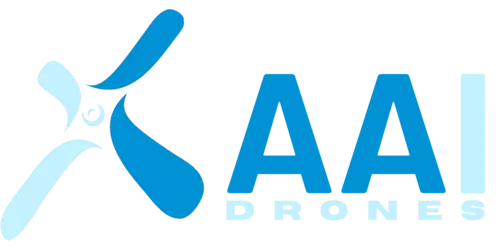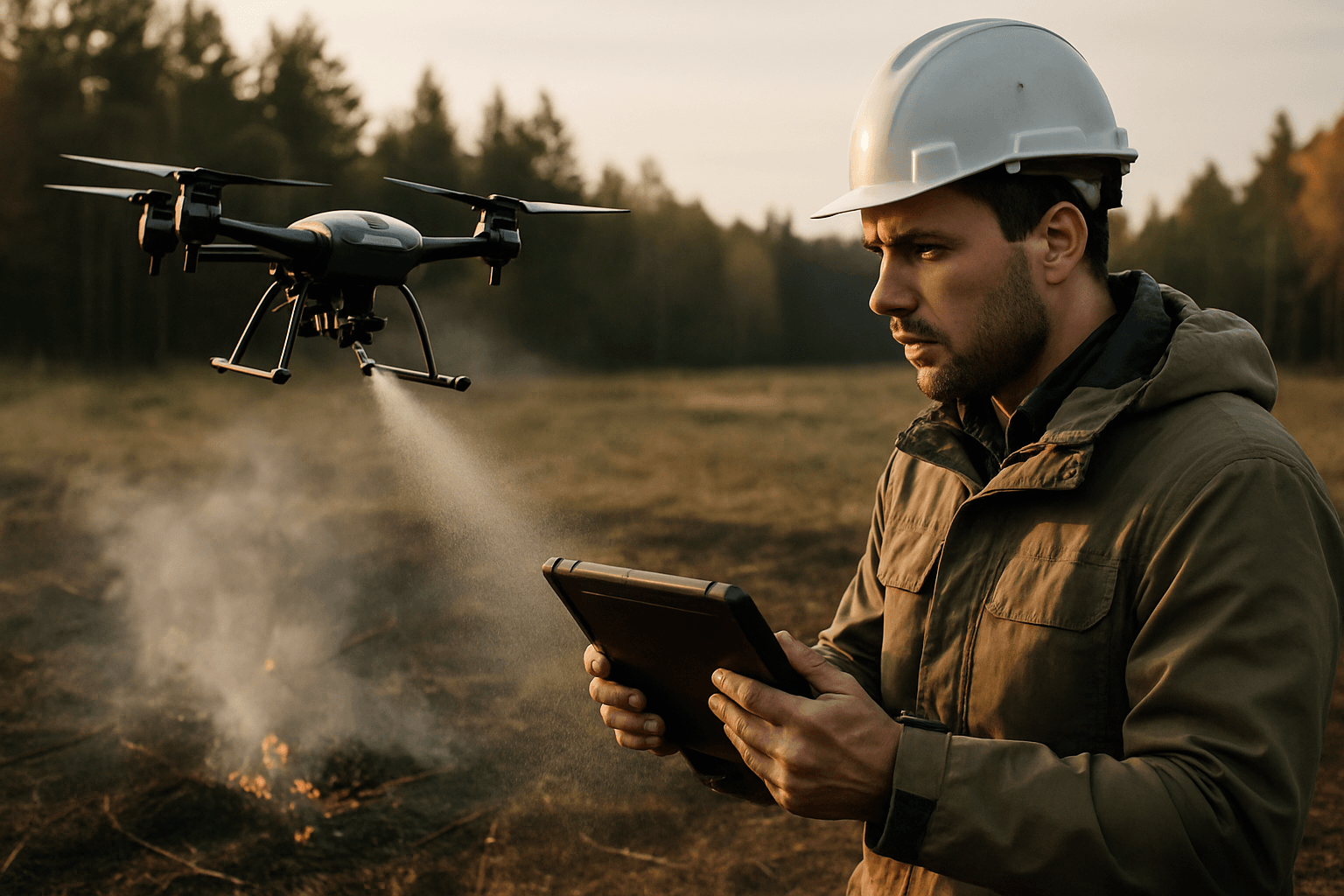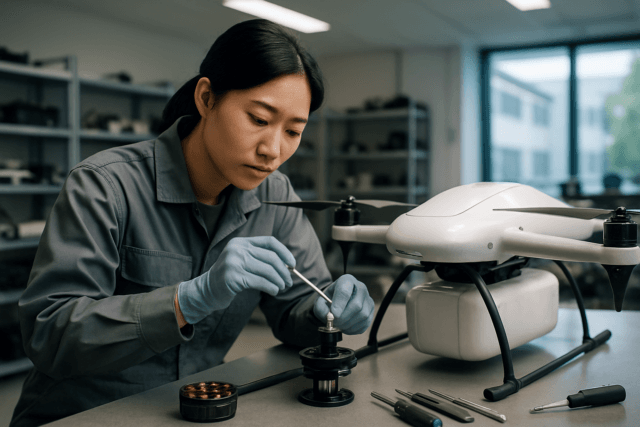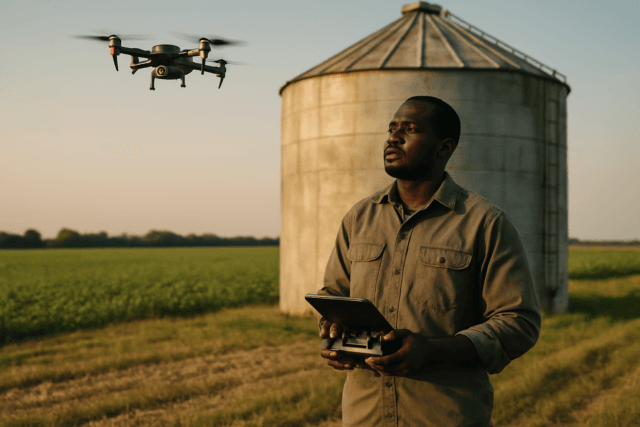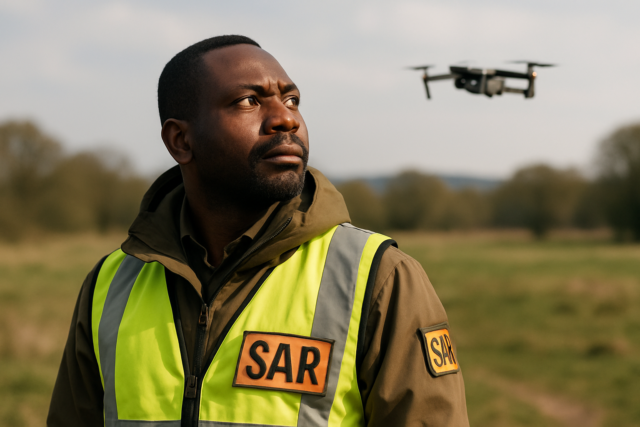BERLIN, Germany – Dryad Networks, a trailblazer in wildfire detection technology, has successfully demonstrated an autonomous drone system capable of detecting and extinguishing wildfires in under 12 minutes without human intervention. The groundbreaking event showcased the integration of Dryad’s Silvanet sensor network with its Silvaguard drone system, marking a significant leap forward in rapid wildfire response and mitigation.
The demonstration, held in Eberswalde, Germany, proved that combining AI-powered gas sensors with small, autonomous drone systems can drastically reduce wildfire damage and response times. This innovation comes as the global community continues to grapple with increasingly destructive wildfires, with damages from events like the Los Angeles fires estimated to be as high as $150 billion.
An Integrated Approach: Silvanet and Silvaguard
Dryad’s system operates on a two-pronged approach: ultra-early detection through its Silvanet sensor network and rapid, autonomous response via its Silvaguard drone system.
Silvanet: The “Electronic Nose” of the Forest
The Silvanet system utilizes a network of solar-powered gas sensors deployed on trees throughout a forest. These sensors act as “electronic noses,” designed to detect the gases emitted during the smoldering phase of a wildfire, such as hydrogen and carbon monoxide, often before any visible smoke or flames appear. This ultra-early detection capability allows the system to identify a fire within minutes of ignition, providing a critical head start that traditional camera or satellite-based methods often miss. The sensors operate on an IoT mesh network, leveraging AI and machine learning to distinguish actual wildfire indicators from other sources.
Silvaguard: Autonomous Observation and Suppression
Upon detection by the Silvanet network, a Silvaguard observation drone is autonomously launched from its solar-powered hangar. Equipped with optical and infrared imaging, this drone quickly navigates to the detected location to pinpoint the fire’s exact position and size, providing real-time aerial observation. This initial response saves crucial time and resources for fire services.
The demonstration highlighted an even more advanced capability: a Silvaguard suppression drone, also enhanced with Dryad’s on-board computer and vision system, autonomously launched and extinguished the fire. Dryad CEO Carsten Brinkschulte stated that the new suppression drone completes their solution, creating the world’s first end-to-end autonomous wildfire suppression system. The long-term vision for Silvaguard includes using innovative suppression technologies, such as acoustic waves, to extinguish fires in their initial stages.
The Demonstration’s Impact and Future Vision
During the public demonstration, the Silvanet sensor network detected a controlled fire within three minutes of ignition. Subsequently, the Silvaguard observation drone launched to locate the fire, and a suppression drone then launched to extinguish it—all within less than 12 minutes from the initial ignition, with no human involvement.
This success is a significant milestone towards Dryad’s mission to prevent 2.8 million hectares (6.9 million acres) of forest from burning and prevent 1.1 billion metric tons of CO2 emissions by 2030. The company’s technology is also designed to monitor forest health and growth, further contributing to environmental protection.
Dryad is a semi-finalist in the XPRIZE Wildfire competition, a global initiative challenging teams to develop technologies to end destructive wildfires. The European Union is co-funding the Silvaguard project with €3.8 million in grants and loans. Dryad is also expanding its reach, with strategic partnerships for satellite connectivity to enable deployments in remote regions and has over 50 customers globally.
The company believes that ultra-early and autonomous wildfire suppression is the future, offering a critical advantage in minimizing the spread and damage of increasingly prevalent and intense wildfires.
